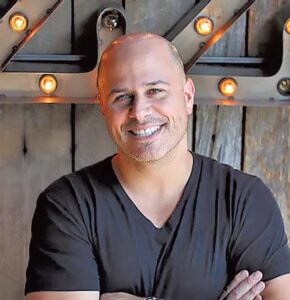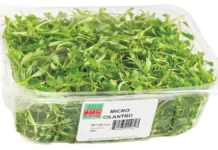
Article contributed by Kyle Inserra
Part 1: Building Your Bench
When I was in fourth grade, I played quarterback for the hometown pee-wee football team, the Lions. We had a bit of a reputation for having a strong program, and this year was no different. It didn’t matter who we were up against, for 9-year-olds, we had some swagger. We walked onto the field each week knowing we would win.
There was just one problem. We were a bit of a “one trick” pony. You see, Chris, our star player was larger and faster than your average 4th grader, and most (all) of our offense was centered around getting him the ball any way possible. He was our running back, lead kick-off returner, punt returner, and middle linebacker on defense to boot. Our offense should have just basically been called “give Chris the ball”.
Now this worked, really well, – until the one Friday night, game against the Bears. I remember like it was yesterday. As I have done a hundred times before, I handed the ball off to Chris – he busted out to the right, down the sideline and was flying, when out of nowhere – a defender hit and he went down out of bounds a nice long gain, but then… he didn’t get up.
The coaches came running out as Chris lied on the ground writhing in pain. He kept grabbing his knee and was screaming – this wasn’t looking good for the Lions. The coaches put Chris’ arms over their shoulders and helped him off the field – he never came back. The coach’s face said it all, even at 9 years old I knew he didn’t have a backup plan, and the rest of the team had the same “Now what?” look on their collective face.
It was at this moment that I realized if the strength that one player isn’t enough to carry a team. As important as Chris was to our team, equally as important is who replaces him when he’s not able to be there. You need trained replacements in situations like this – you need what coaches call a strong bench.
The same can be said for your restaurant, particularly if you’re looking to add additional units. It absolutely makes sense to take some of the key players from one of your stores, and bring them over to the new shop. If you’ve done your job correctly, those key team members help you “carry the flag” – they know your standards, they have a clear set of expectations, and they have a consistent track record of being able to execute.
In fact, I’ll go as far to say that if you can’t move some of your key players to the new store, then you’re not ready to expand. Being overly reliant on one or two key players is not how you’ll build your brand. Your priority should be focused on constantly cultivating from within – make it so ingrained in your culture that it’s seamless.
The second the barback shows and interest in a cocktail, show them how to make it – ABT – always be training. In 2008, New England Patriots quarterback Tom Brady tore his ACL in the first week of the season, and although they didn’t make the playoffs, backup quarterback Matt Cassel stepped in and led the team to an 11-5 season. Look, even the Chicago Bulls couldn’t do it with just Michael Jordan – they needed Scottie Pippen and Horace Grant to round out the team. Can you tell I love sports analogies?
At the end of the day, your success has been rooted in the fact that you have delivered consistently, day in and day out – and that is the name of the game. Heck, even Broadway has understudies! The show must go on! Your guests don’t want to walk into something different every time you make a change of staff.
If service suffers, or if the food starts to taste a little different – you’re in trouble and will those customers you worked so hard to get, won’t be there very long.
You need to be constantly cultivating staff through training and clear, concise communication. The moment you decide that you’re adding an additional unit, communicate that plan to your team, and let them know what this will mean to them and their team. Once you’ve created this system of, you’re on your way to buildings strong bench – the essence of every championship team.
Part 2: Not All Money Is Equal
I was living in St. John in the US Virgin Islands, working as the Executive Chef for a beach front restaurant on one of the most beautiful and well-preserved islands in the Caribbean. I know – sounds like a dream job, right?
Well, let’s just say it’s not as glorious as it seems – there are definitely perks – like gorgeous weather 95% of the time, immaculate beaches, and a laid back vibe that is a little too easy to settle into – but that’s a whole other story.
You see in the summer, St. John empties out – so, one summer, I flew back to New York, and picked up a consulting gig in Bridgehampton, NY. It was a great job – I was basically helping a chef from Spain understand the American culture and palette while at the time helping him manage this crew of misfit line cooks.
One night, after a crazy long service slinging Gambas Al Ajio and Pan con Tomate to three hundred Hamptonites – we headed out for a drink. It was that night that I was introduced to my future partner in my first restaurant. We’ll call him Tommy. Tommy was working in town helping a friend his open a brand new sea to table restaurant.
From the moment we met, we hit it off famously. We hung out a bunch of times after that, and when the summer was over – he said to me, “we should open a restaurant”. Now, this is pretty common amongst chefs, I mean, I have had this conversation several times before and nothing had ever come of it. So, I said, “Yeah, that would be awesome!” – and never gave it a second thought.
A few weeks later, I boarded a plane back to the Virgin Islands ready to get back to work, as the busy winter season was coming up fast.
I had been back to work for about a month, when I get a text from Tommy and he says, “I have a space for us, and best part is the guy I have known for years is willing to put up all the money, and give us equity!” Whoa.
Now, the beaches, and the weather were nice on St. John, but equity in a restaurant in New York – that’s an opportunity I couldn’t turn down. After a few weeks of back and forth – tossing around ideas – I was on a plane, headed back to NY.
I was now a restaurant owner.
I met Tommy at the space, and he showed me the progress they were making. I met the contractor, and some of his friends. Tommy and I started putting the menu together, and testing some recipes, and putting together all the A few weeks went by with Tommy and I spending every waking minute in the restaurant making sure everything was just right.
But one thing that was odd, was, although I kept asking, I never met the friend (we’ll call him Steve) that put up all this money and gave me this tremendous opportunity. Seemed odd. Then one day, Steve pulls up in his black tinted out SUV, hops out, music blaring, sunglasses on and struts (yes, struts) into the restaurant.
Before I could get a word out it was “Hi, I’m Steve, I paid for all this.” Well ok then. “Nice to meet you, I truly appreciate the opportunity and look forward to doing big things.”
You see Steve liked big things, he himself was rather big, and considered himself a worldwide nightclub impresario, and proceeded to tell me all the locations in the US and abroad where we were going to be opening this concept.
If I’m being honest, I was half scared out my mind for what I got myself into, and half excited. I mean if 5% came true from what he was claiming he could do – we were going to be rich! Again, a different article, at a different time.
We finally open, and we were slammed. We had lines down the block, and people were flocking to us, night and day. Then, one day a blurb shows up in the Wall Street Journal, then a fantastic review from The New York Times, next the local magazine names us “Best New Restaurant” and we were off to the races.
Sales were going up, 25%, 30%, 50% a week – we knew had something, and people started to take notice. Guests were offering us money to open another locations, brokers were emailing us listings every day – but we held off. It was at this point that Steve asked for a meeting.
He started by saying how happy he was, and what a great job we had done – and soon shifted the conversation to money and how much he needed each week on top of his loan payback. Now, I said we were busy – and we were, our sales were about $25k out of a 1,200 SF space – but Steve was adamant that he needed $6k a week, a week, for his “pocket”, and there was no negotiating.
And since you’re reading this magazine, I probably don’t have to tell you, there was no way we could afford this, and it was a sure-fire way to put us out of business.
It was at this point we began looking for someone to buy him out. We had several conversations with experienced operators and other industry professionals who schooled us on the fact that not all money is equal.
What we needed was termed, “patient capital” – essentially money that someone could afford to invest without having to stress about the timing on when he or she will see a return. We currently had the exact opposite of that – and it wasn’t working. This dynamic went on for about two months – and since he controlled the bank accounts there was very little that we could do.
Eventually, we found the ideal partner – who not only bought him out, but brought a calm, business minded/investors approach to the team, and he went on to help us open other stores.
The lesson here is – be selective with who you choose to take money from. The restaurant business is stressful enough, and the last thing you don’t need the added stress of having to pay for something you can’t afford on a regular basis. Make sure you do your due diligence to ensure that they don’t need this money in six months.
My suggestion: sit down before signing anything, and have a very transparent conversation about where you all stand financially. Bring documentation if you have too. Also, make sure you are clear on compensation and repayment terms and have your attorney draft a promissory note, along with a partnership agreement.
In the end, if you’re going to bring in a partner for capital – it would be ideal if they provided some other type of value. Maybe they have experience in growing restaurant concepts, or maybe an attorney or a developer. Something that can help you build your brand and scale your concept without bleeding you dry.

A 18-year restaurant veteran, Kyle Inserra is now part of the national accounts team Sabre Advisors, specializing in the strategic growth and nurturing of emerging restaurant brands.
A restaurateur himself (co-founder of Polpettina and LA LA Taqueria), his insider’s perspective of what it means to be a restaurant operator day-in and day-out, allow him to relate to his clients’ ever-changing needs.
His expertise includes everything from site selection, lease negotiation, demographic and psychographic analysis, competitor analysis and zoning regulations.
Kyle is also the host of The National Restaurant Owners Podcast, a show focused on bringing value to restaurant owners across the country by sharing his insight and experience, with a wide variety of guests. Contact him at kylein serra























